The church's cemetery, called the Piscatawaytown Burial Ground, is one of Middlesex County's oldest cemeteries, with known burials dating to 1693. British soldiers are buried in a common grave near the Woodbridge Avenue side of the cemetery. It is believed that the British also buried some American soldiers in the cemetery as well, but the location of the American burials is unknown.
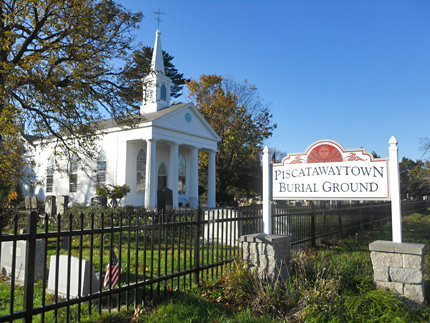 St. James Episcopal Church and The Piscatawaytown Burial Ground
St. James Episcopal Church and The Piscatawaytown Burial Ground
The Piscatawaytown Burial Ground is located next to St. James Church on Woodbridge Ave. Behind the Burial Ground is the “Commons” which is the oldest public open space in Middlesex County. The Commons was a place where the local militia drilled, where animals were allowed to graze. There was also a Town Meeting House, and Stocks located in the Commons.
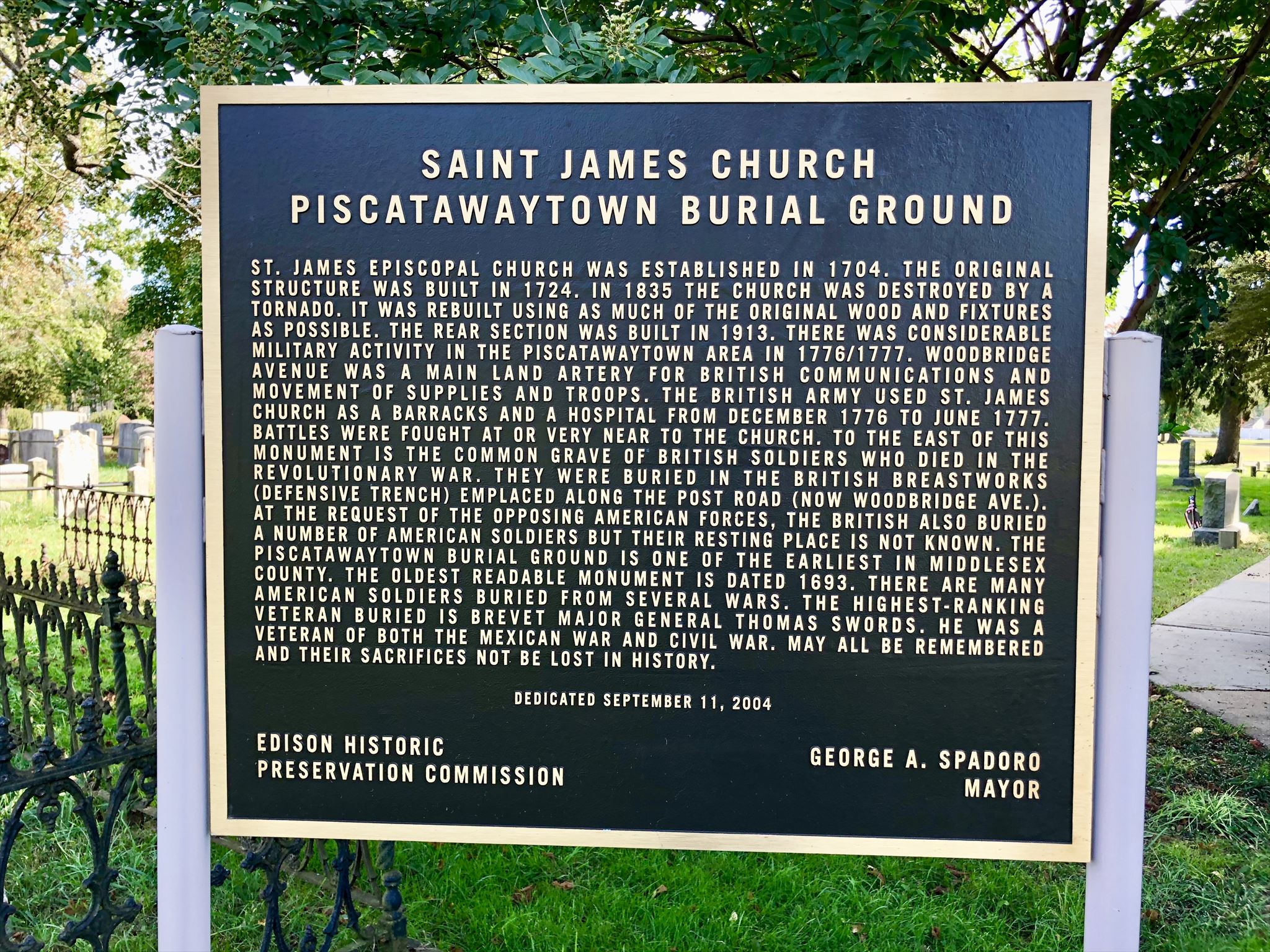 The Piscatawaytown Burial Ground
The Piscatawaytown Burial Ground
Across Park Way from the Commons it the Dunham house, which was a tavern during the American Revolution. At one time George Washington, & Alexander Hamilton ate breakfast here.
Woodbridge Ave. during the Colonial Era was known as the Post Road. This was the main road from New York City, to Philadelphia. News from throughout the 13 Colonies passed through this area. People such as George Washington, Ben Franklin, and John Adams, all traveled on what is now Woodbridge Ave.
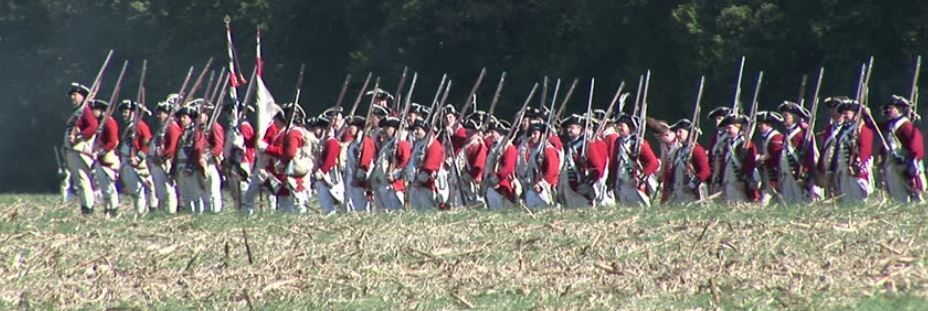 Royal Highland Regiment
Royal Highland Regiment
The British 42nd Regiment, known as the Royal Highland Regiment, occupied Piscatawaytown during this time. St. James Church was used as a barracks and hospital, and troops encamped on the burial ground.
In December 1776, the American Army under the command of George Washington retreated through this area on their way to Pennsylvania. Quickly the British Army moved into this area. The British used the Burial Ground and Commons as a camp. The St. James Church was used as a barracks by the 42nd Regiment, which was known as the Royal Highland Regiment “The Black Watch”, and as a hospital, during the winter and spring of 1776-1777. Legend has it that British soldiers were buried in the front of the church.
Woodbridge Ave. (Then the Post Road) connected British forces in New Brunswick, Piscataway, Bonhamtown, and Perth Amboy. This was a major supply, and communications artery for the British. To feed and supply this large army, the British sent out foraging parties to seize food and supplies from the local farmers. This increased the opposition to the British rule in Middlesex County.
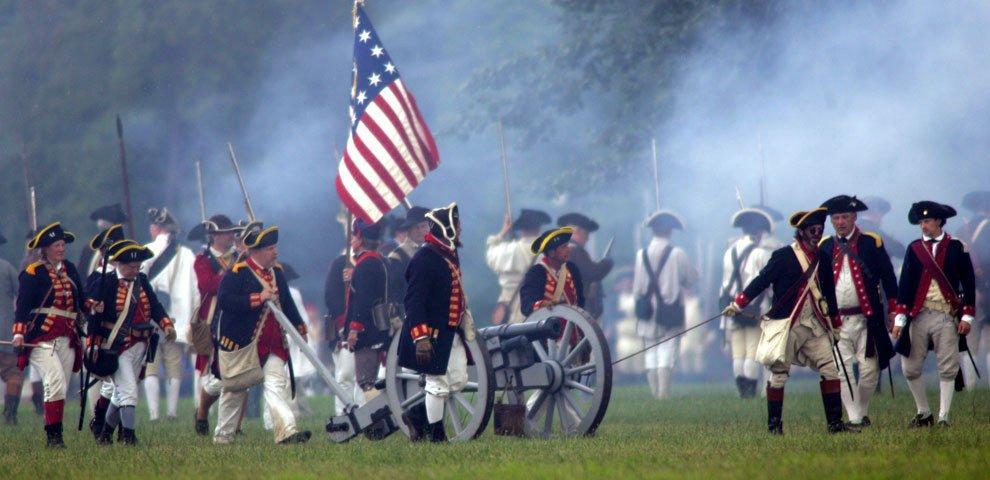 American Troops
American Troops
On the afternoon of May 10, 1777 The British 42nd Regiment, known as the Royal Highland Regiment, occupied Piscatawaytown during this time. St. James Church was used as a barracks and hospital, and troops encamped on the burial ground in Piscatawaytown was attacked by 1500 Americans. The British then brought in reinforcements, and fought the Americans all the way to the Metuchen Meeting House 4 miles away. The British had 2 officers’ killed, and 26 men killed and wounded. The Americans lost 40 and had 36 men taken prisoner.
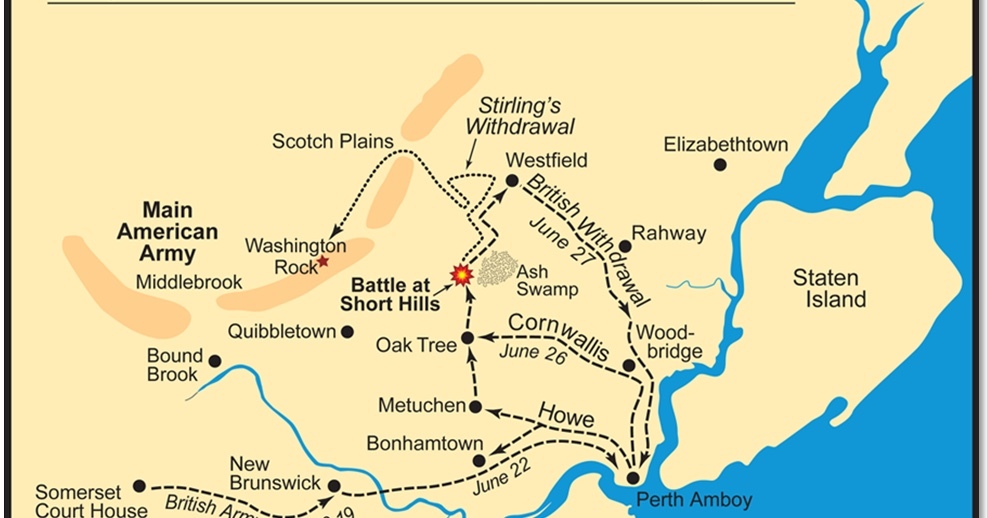 Map
Map
On the 25th of June 1777 the British moved out of Piscatawaytown, and marched to Perth Amboy. On June 26, British commander General Howe they changed directions and marched to North Edison, where two-pronged attack on American forces in what would become the Battle of the Short Hills. The first major fighting of the Battle of the Short Hills was the Oak Tree Engagement, which was fought about six miles north of the church, which was the largest battle in Edison during the Revolution. 4 days later, the British Army leaves New Jersey, and sails to the Chesapeake and later in the year fight at the Battle of Brandywine.
This Patriot image is found on all "The NJ American Revolution Geo~Trail" caches throughout New Jersey. These Geo Trail geocaches are hidden at many historic locations which have a connection to important New Jersey's American Revolutionary War history. To participate in the optional Geo-Trail, after you find the geocache, locate the secret code and record it into your passport which you will print from this website. Information at njpatriots.com
 ”njpatriots.org"
”njpatriots.org"
The Northern New Jersey Cachers, NNJC is about promoting a quality caching experience in New Jersey. For information on The Northern New Jersey Cachers group you can visit: www.nnjc.org.
 nnjc.org & metrogathering.org, & njpatriots.org
nnjc.org & metrogathering.org, & njpatriots.org